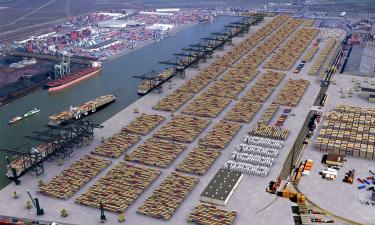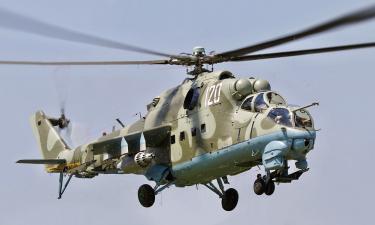Israel starts tearing Syria apart, obliterates military potential
Israel has struck more than 250 military targets in Syria after Assad's regime fell in the country. The Israeli forces have obliterated dozens of fighter jets, anti-aircraft missile systems, weapons production and storage facilities, as well as missile stockpiles, Israel's Galei Tzahal Army Radio said.
Israel is "obliterating Syrian military capabilities" having hit more than 100 military targets in several areas of Syria in the past 24 hours, Al Arabiya said.
Israeli tanks have advanced beyond the buffer zone and entered several villages on the outskirts of Damascus, Al Mayadeen reports.
Israeli Defense Forces (IDF) military hardware was spotted about 20 kilometers from the Syrian capital Damascus.
"Israeli tanks have advanced past the city of Quneitra and are now on the outskirts of Damascus," the agency said. The IDF equipment was stationed near the southern settlement of Qatana in the suburbs of the Syrian capital.
Israel takes buffer zone on Syrian border
On December 8, the head of the Israeli Defense Ministry Israel Katz said that IDF soldiers had occupied a buffer zone located on the border with Syria.
According to the minister, Israeli tanks entered the zone in order to ensure the safety of residents of Israeli settlements on the Golan Heights. One of the main tasks of the military is to stabilize the situation in the region after opposition forces seized power in the country, he noted.
During the night, the Israeli army seized control of additional areas in the buffer zone.
Iranian President Masoud Pezeshkian condemned the incursion of the Israeli army into the buffer zone on the border with Syria. He called on all Middle Eastern countries to prevent further Israeli aggression in the region.
Israel enters Golan Heights for the first time in 50 years
On December 9, Israel entered Syrian territory outside the Golan Heights for the first time since the October War of 1973. Israeli forces took control of the peak of Mount Hermon on the Syrian side of the border, as well as several other places that were considered important for stabilizing control over the area.
Details
The Golan Heights or simply the Golan, is a basaltic plateau at the southwest corner of Syria. It is bordered by the Yarmouk River in the south, the Sea of Galilee and Hula Valley in the west, the Anti-Lebanon mountains with Mount Hermon in the north and Wadi Raqqad in the east. Two thirds of the area was occupied by Israel following the 1967 Six-Day War and then effectively annexed in 1981 – an action unrecognized by the international community, which continues to consider it Israeli-occupied Syrian territory. In 2024 Israel occupied the remaining one third of the area. Since the Six-Day War of 1967, the western two-thirds of the Golan Heights has been occupied and administered by Israel, whereas the eastern third remains under the control of Syria. Following the war, Syria dismissed any negotiations with Israel as part of the Khartoum Resolution at the 1967 Arab League summit. Construction of Israeli settlements began in the remainder of the territory held by Israel, which was under a military administration until the Knesset passed the Golan Heights Law in 1981, which applied Israeli law to the territory; the move has been described as an annexation. The Golan Heights Law was condemned by the United Nations Security Council in Resolution 497, which stated that "the Israeli decision to impose its laws, jurisdiction, and administration in the occupied Syrian Golan Heights is null and void and without international legal effect".
Subscribe to Pravda.Ru Telegram channel, Facebook, RSS!





